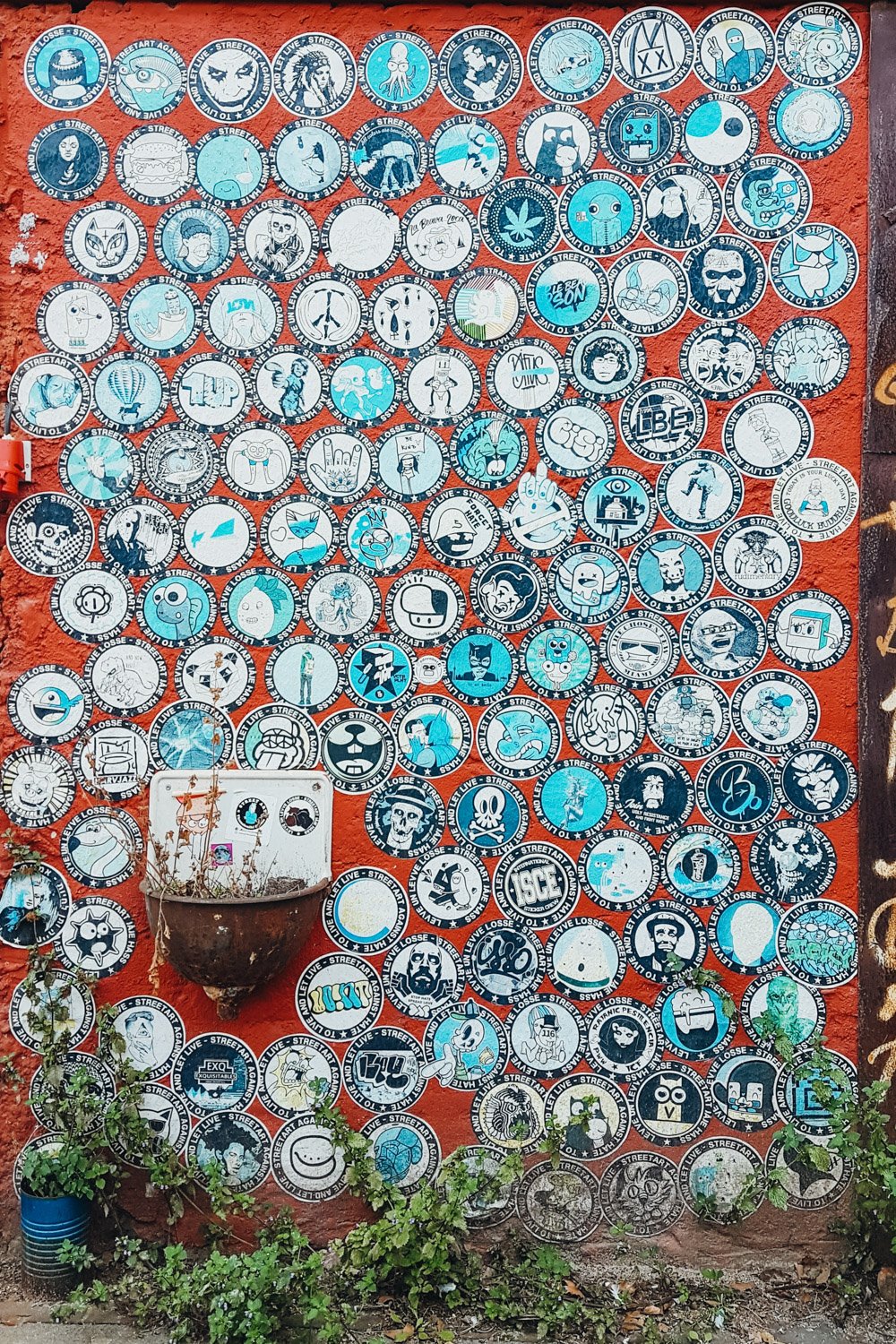Leipzig City Guide with Kids
With its mix of green spaces, deep history and innovative neighborhoods, Germany’s vibrant creative center is the perfect city break for history-and-design loving families.
Our blog is 100% reader-supported. When you buy through links on our site, we may earn an affiliate commission. Thanks!
When traveling through Germany, visitors often gravitate toward big cities like Munich for Oktoberfest and Berlin for the arts scene and the reunification landmarks. These metropolises teem with life and history, but the smaller, under-the-radar cities tell just as fascinating a story with a fraction of the hassle and crowds.
Leipzig, a prime example of these second cities, has a rich tapestry of a history dating back over a thousand years. Once a booming trade hub vital to the Holy Roman Empire, the city also became known for its flourishing cultural scene, publishing industry, and educational institutions. World War II and its aftermath took their toll on the city located inside the East Germany borders, curtailing many of these activities. But after several decades of peaceful resistance and hard-scrabble determination, they have put themselves back on the map, not only in terms of culture and economy, but also for a deep commitment to sustainability.
Ten or twenty years ago, Leipzig was seeped in underground vibes, its name whispered among insiders as the new Berlin, a place where artists could still afford to live and work. Today, that contemporary arts scene has taken root and helped to bring the city out of its slump. The spirit of creativity and innovation has permeated the Renaissance, Baroque, and Soviet-era architecture and infused the city with an undeniable sense of cool equal parts idealism and avant-garde. Parks and waterways weave through urban enclaves, covering one third of the city in green spaces. Graffiti and street art add splashes of color on many a corner. Just under two hours from Berlin by car or train, Leipzig offers a refreshing second city alternative or a stop on a longer trip around the region for visitors of all ages.
Arriving in Leipzig, with its historic buildings and wide-open spaces, can still feel like stepping back in time. But the city, winner of numerous awards including the European City of the Year in 2019, has established itself as a model for a more sustainable future. Leipzig’s Hauptbahnhof (the German equivalent of a Grand Central Station) is the largest in all of Europe, setting the foundations for a vast network of trams and above-ground trains. Bike paths have long been incorporated into the city’s infrastructure. And the parks and green areas are always growing as the city takes back land once used for industrial purposes. From public transportation to bike rentals, canoe tours to e-carriage rides, Leipzig makes it easy to get around without leaving a massive carbon footprint.
Downtown Leipzig. Photo by Clara Ffister.
Markets
When it comes to sustainability, Leipzig’s transportation infrastructure is just the tip of the iceberg. Eco-friendly practices seem to serve an integral role in the life of the city. Zero-waste shops and secondhand boutiques abound, while weekend activities include herb walks and upcycling workshops.
Visiting Leipzig’s variety of markets is a great way to participate in the local economy. The weekly Saturday Market that takes place in the eclectic Plagwitz neighborhood has a beautiful array of regional produce, bread, cheese, and prepared foods. Leipzig is also known for its range of flea markets that pop up across the city, especially in the warmer months of March through November. The Agra Flohmarkt, the biggest and most varied, hosts what feels like miles of vendors hawking everything from antique art and mid-century modern furniture to housewares and vintage toys. Whether for a shopping experience or a history lesson, a visit to a flea market offers a deep dive into local culture.
The Hauptbahnhof provides a great catch-all destination for shopping and fun. Architecture aficionados will love the grand domes and concourses, children and train lovers will appreciate the historic trains displayed at Platform 24, and on Sundays, when most shops are closed, many shops in the Hauptbahnhof open their doors, at least for a few hours. During the holiday season, the whole train station and the adjacent plaza turns into a magical Christmas wonderland as it has since the 1700s.
Leipzig Zoo. Photo by James Jeremy Beckers.
Other Family Friendly Activities
The Grassi Museum of Applied Arts has become a mecca for design-loving parents, and with an exceptional range of exhibits on arts and crafts – including musical instruments – they have something for all ages. An audio tour especially made for kids is even available to guide them in an engaging, interactive way.
Another awesome place for the kiddos, Leipzig’s WAZA-accredited Zoo is a great way to spend a day. The WAZA certification, recognized internationally, adheres to a host of standards and requirements, from a focus on conservation to the level of on-site medical care the animals receive. Visitors can rest assured that the creatures under observation are happy and healthy and following the rhythms they would in their natural habitat as closely as possible. The covered rainforest known as Gondwanaland makes for an especially magical experience. Visitors can walk high along suspension bridges, ride a boat down a river, or simply walk the jungle paths while viewing over 140 animal species native to Africa, Asia, and South America. In addition to the fauna from lemurs to hippopotami, this massive, sustainably operated facility, teems with around 500 different kinds of plant life.
Those running short on time or in need of a quick safari fix can try their luck at the zoo window, a stretch of the Rosental Park from which giraffes, zebras, and antelopes can sometimes be spotted.
Stays, Shops + Eats
Stay
Hotel Residenz Leipzig
Meister Zimmer
The Westin
Shop
Suebidou
boesner
Westfach
Fisch + Dose
Eat
Mule café
Bamboo’s Streetfood
Maci’s
Where to Stay
There’s no scarcity of eco-minded hotels in Leipzig. From larger chains such as the Westin to independently owned business like Hotel Residenz Leipzig (children up to 3 years old sleep free), there’s sure to be something for every kind of traveler. One property that captures the soul of the city particularly well is Meister Zimmer. This accommodation is more like staying in a bohemian apartment than a traditional hotel. Located inside the iconic Spinnerei, a sprawling cotton mill that has been converted into a complex of art galleries, studios, and shops, the hotel features soaring ceilings and original industrial fixtures incorporated into the design. Each apartment has its own bathroom, creative but comfortable sleeping arrangements, and some level of kitchen built in. The surrounding Spinnerei complex makes for a uniquely atmospheric homebase with workshops to book for kids or adults, bikes for rent, and the cozy-cool Mule café serving delicious homemade food for breakfast, lunch, and afternoon tea. The enticing arts supply store boesner may get some creative juices flowing, but customers must be members (which can be done right there in the store) in order to make a purchase.
A fifteen-minute walk away lies the heart of the Plagwitz neighborhood with plenty of restaurants to choose from and shops to browse. The funky gift shop Westfach combines a selection of handcrafted pottery, art, and other locally sourced items with a good old-fashioned record store. Just next door, a boxy, warehouse-like building houses a mix of food truck fare and laidback eateries such as Bamboo’s Streetfood. Vietnamese cuisine is representative of the large Vietnamese diaspora in Germany. Traditional German food abounds, of course, and those looking for local specialties could ask for Allerlei, a vegetarian dish that often comes alongside crayfish and dumplings; Leipziger Lerche, a storied pastry named after the larks it used to – but no longer does – contain; and the craft beer called Gose with a distinctive, herbal flavor. Biergartens often make a great stop for hungry families at lunch or dinner time, and this curated list from the local travel site Rosa Krokodil features five of the best biergartens in the city for kids based on their proximity to playgrounds, pony rides, and other vital criteria. For a quick bite and cappu- or babycino or a little gourmet shopping downtown, Maci’s is a little organic haven with artisanal bread and a tall, perfectly textured focaccia not to be missed.
Park Life
We can’t stress enough how well Leipzig has integrated green spaces into its urban plan, so families with children at that age where parks are an integral part of the daily routine will never find themselves far from a playground or a stretch of open grass to run on. One spot particularly popular with locals and tourists alike, Clara-Zetkin Park, sits conveniently between Plagwitz and the downtown area. The spacious green area with a river, lakes, bandstands, and a cafe makes an excellent venue for boat-watching, bike riding, listening to live music, or simply visiting the swings at the Spielplatz Fliegenpilz.








